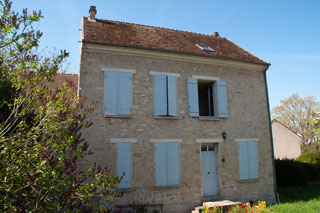Prochain point : lat="49.101475" lon="1.966484"

VILLAGE CORE
Changes over the course of centuries
Around the presbytery, town hall and post office...
The village’s buildings and open spaces have undergone changes since the 19th century. Once the cemetery was at the heart of village life, next to the church. The Royal Order of December 6, 1843 obliged rural towns to move tombs outside of their walls for public health reasons. This transition was mentioned at an Us town council meeting in 1867. A resident, Madame Félicité de Sainte-Rose, donated land to the town to establish the cemetery on its current site in 1874.
The presbytery was also built close to the church at the end of the 19th century. Its main function was to house the parish priest and, if necessary, his vicars.
In 1881, the town council voted to build a large building, which was to serve as the town hall, housed in the central area, with a girls’ school in the left wing and a boys’ school in the right wing. The schools opened on April 28, 1889. The post office was opened in 1893, in the building which previously served as the town hall and boys’ school. In 1897, the post office expanded its activities to include a telegraph office.
...the transformation of the village
The construction of the rail line and station, as well as the development of the sugar industry, brought significant changes to the town’s urban landscape. The number of workers increased, leading to the construction of row houses and the opening of businesses such as cafés, hotels and restaurants. The development of the railway also facilitated tourism and saw the construction of rural mansions, with urban architectural influences. “Ma Vallée” is an example of one such mansion. This beautiful burrstone home dates from the second half of the 19th century. A house was originally built on this land in 1846. Jules Albert Chéron, the village coppersmith, bought the property in 1885. It was he who either renovated the previous house, or built this attractive residence in 1890. The uniformity of the facade is a deliberate aesthetic choice, its symmetry even extends to the dormer windows.
Thus Us evolved from being a rural, to an industrial, to a residential area.



